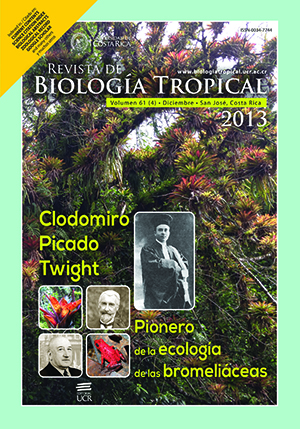Abstract
Arecaceae is a family rich in species and provides resources for the subsistence of human groups in the tropical regions. The aim of this work was to assess the richness, diversity, composition, and use patterns of the family Arecaceae in three communities of the Medio Atrato, Chocó, Colombia, in order to obtain useful information to support the sustainable use and conservation of this plant groups in the biogeographical area of the Colombian Chocó. The fieldwork was carried out between 2009 and 2010 in the localities of Beté, Tanguí and El Buey in the municipality of Medio Atrato. In each of the communities, a total of ten plots of 80×5m (400m2; 0.4ha per zone) were established and all individuals of palm species were counted and recorded. On the other hand, information on use types and useful organs was also recorded in each community through informal interviews. A total of 29 species and 18 genera were recorded. Bactris (24.13%) and Wettinia (10.34%) were the genera with most species richness. El Buey showed more species and genera richness (23 species, 17 genera) than Beté (15, 10) and Tanguí (14, 11). The floristic similarity among the three communities was less than 45%. The species with higher use and ecological value were: Euterpe oleracea, Oenocarpus bataua, Attalea allennii, Manicaria saccifera, Bactris gassipaes and Wettinia quinaria. The categories of use with higher number of species and cultural importance were construction, food and handicraft. The most used structures of the palms were the stems and fruits. In conclusion, the results indicate that the Medio Atrato has high richness and diversity of palm species in a regional and national context. However, the relationship between number of use and ecological importance of the species depends on the locality and show that the socio-cultural significance of the palm species may vary among groups of people who share a same culture or biogeographic region. Future studies should be conducted to determine the role of the type of organ used as raw material on the demographic and ecological dynamic of the palm populations in the Chocó and other Neotropical regions.##plugins.facebook.comentarios##
Downloads
Download data is not yet available.


